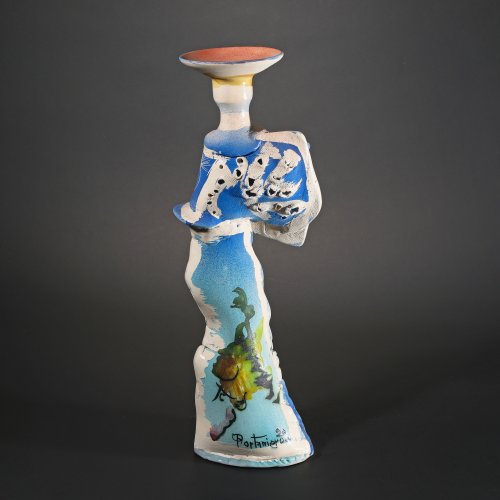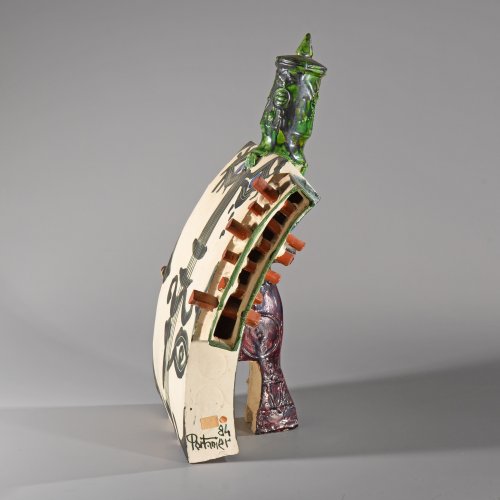Biography
The artist started to study architecture and painting at the École des Beaux-Arts in Paris but soon found out that he could not stand the way art was taught at the school. While he was staying at Paris, and a little later, at Brussels, he made friends with a group of the most important philosophers, writers and artists of his time. He came to know Jean-Paul Sartre, Francis Picabia, René Magritte and Pierre Alechinsky as well as Pablo Picasso.
In 1949, he moved to Vallauris, together with two of his friends, Alberto Diato and Francine del Pierre. They founded a ceramic workshop and taught themselves to shape, fire and decorate clay. After Diato and del Pierre had left Vallauris, his relationship with Picasso, who had come to the town in the same year as he had, grew closer. The famous Spaniard had also just recently begun to devote himself to ceramics and both artists exchanged ideas they had had and accomplishments they had made. Both first drew on the traditional ways of pottery of the region, with Portanier intending from the beginning to make his own vessels and decorating them, instead of using already existing ewers or plates. From the start, it was clear to him that he wanted a ceramic carrier for his paintings, but he did not like rectangular or round plates. He began to create sculptural vessels that appeared to be really handcrafted. His turned vases had visible grooves, his built sculptures untrimmed irregularities. He also applied pieces of clay, and in the later years, he began to incise the former even ground. Since 1985 Portanier uses solely white clay that he casts into plaster moulds or forms them into plates that he subsequently assembles. He applies his motifs on the natural white clay, and when the colour has dried, he sprays on a kind of varnish that shields the painting from environmental impact.
Each of his sculptures that he signs and dates like a painter would his or her painting is one of a kind.


